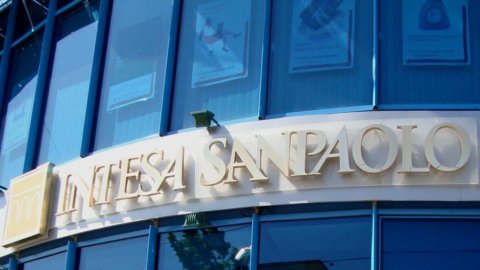From The Madonna with Child, Saint Elizabeth and Saint John the Baptist of Agnolo di Cosimo di Mariano, known as Bronzino, work from Museum and Real Bosco di Capodimonte in Naples, which has just completed its restoration. The painting will be exhibited in the Spazio Trentacinque room, where the sixteenth-century masterpiece can be admired in an environment of irrepressible modernity and surrounded by the nature of the bioclimatic greenhouse. The exhibition aims to be the gift that Intesa Sanpaolo offers to those who live, work or are visiting the city during the Christmas holidays. Admission is free upon reservation required on the site www.grattacieloimpresasanpaolo.
Thus the opportunity to access the upper floors of the skyscraper is renewed where, as part of the Luci d'Artista initiative supported by the Bank, at dusk it will also be possible to admire “α-chromactive”, the installation created by the Migliore+Servetto Architects studio specifically for the skyscraper and made up of two elements, one suspended in the bioclimatic greenhouse and one placed on the terrace on the 35th floor.
Bronzino's painting, among the masterpieces kept in Capodimonte, will be exhibited in the Spazio Trentacinque from 21 December. It depicts the Virgin with the Child on her knees in the act of playing with the little Saint John, behind whom stands the figure of the mother Saint Elizabeth. The biblical-inspired painting compares two different motherhoods, that of the Virgin Mary and that of the elderly Elizabeth, and symbolizes the handover from the prophet Saint John to the Messiah, the Child Jesus. A sacred theme reinterpreted by Bronzino in mannerist key, with accents, colors and plastic poses reminiscent of Michelangelo.
The exhibition is part of the review Illustrious Guest, initiative that aims to offer visitors at the offices of Intesa Sanpaolo – the Gallerie d'Italia or the skyscraper -, the possibility of getting to know an important work on temporary loan from prestigious Italian and foreign museums. After the success of the exhibition, last spring, of Portrait of Count Antonio di Porcia by Titian, this year the skyscraper is being replicated with the Madonna and Child by Bronzino.
Agnolo di Cosimo (Monticelli di Firenze 1503 – Florence 1572), known as il Bronzino, perhaps due to the color of his hair, was a pupil of Pontormo, from whom he soon differed with a personal style, the result of the synthesis between naturalism and abstraction. He left Florence only for very short periods and carried out most of his activity in the service of the Medici. Of him Famous are his portraits of members of the ducal family and the decoration of the chapel of the Duchess Eleonora de Toledo in Palazzo Vecchio. In the best sacred works - and this is the case of the Capodimonte painting - he manages to add notes of tender humanity to the usual preciousness of shapes and colors. Bronzino was also a versatile poet and a member of the Accademia della Crusca.
The history of the attribution of the painting is interesting. In an inventory of the first century XIX was attributed to Andrea del Sarto. Starting from 1827 other inventories and the guides of the Royal Museum of Naples put forward the hypothesis of the attribution to Bronzino. Only a few decades ago more in-depth studies made it possible to identify its certain paternity, placing the work in the period of Bronzino's late production, at the turn of 1560. Arrived in Naples together with other paintings following the seizure carried out by the Bourbon commissioner Venuti at the revolutionary deposit of San Luigi dei Francesi in Rome (before 1799), from 1929 to 1994 the painting was exhibited in Rome at Palazzo Madama, seat of the Senate of the Republic.





